On Wednesday, September 25, I had the pleasure and opportunity to present with Laurent Morisseau a reflection conducted over recent months (or even years) on the agile enterprise, and particularly on a model of complex companies. As with the book Kanban, the flow approach for the agile enterprise our two brains, although pointing in the same direction, work in different ways and complement each other. So for me, it’s always an effort, but above all, a learning experience.
And as I write this article, Laurent tells me that he has also just written a text that makes a nice introduction: Laurent Morisseau: a model for agile enterprise.
I will summarize the purpose of our meetup on September 25 at CFM.
What did we wish to achieve with this meetup? Share our reflections, present our model on complex companies, initiate a dynamic that could lead to a think tank of entrepreneurs, managers, small and medium-sized enterprises, etc.
Our conviction
Today there exists a middle ground between a completely emergent support where context reigns supreme, and an approach with simplistic “recipe” methods. We don’t want total emergence in order to not ask all the questions, but the right questions, to reduce the field of possibilities. We reject simplistic recipes: we must ask ourselves questions.
Our approach is intermediate, between the entirely codified metro map where you just need to check boxes without thinking, and the “terra incognita” map where everything seems to be rediscovered and reinvented. We place the symbol of the astrolabe: this instrument gives directions, distances, in topography allows to measure distances, helps with surveying, in broad strokes.
We were looking for an instrument that gives directions but without completely defining the map or claiming to know the territory in advance.

A conversation
Knowledge, principles exist.
The whole point of this approach is to make them known to stimulate reflection at the right level: not in all possible directions, not in a simplistic way.
The principles and models we use are intended to articulate our/your reflections, to provide material, anchor points so we don’t talk without understanding each other, and to have a space for this reflection.
We want to have the means for a genuine conversation.
Archetypes
This knowledge that exists, that is already present, from navigating through companies, we have it empirically. This is where Laurent’s left brain comes in; he didn’t settle for that, he needed more structured knowledge. He embarked on reading a thousand tomes. For this purpose, he highlights a theory, Mintzberg’s contingency theory. From history and all these observations, he creates a series of archetypes that represent companies. We advance these archetypes to the current era to propose a model of complex companies.
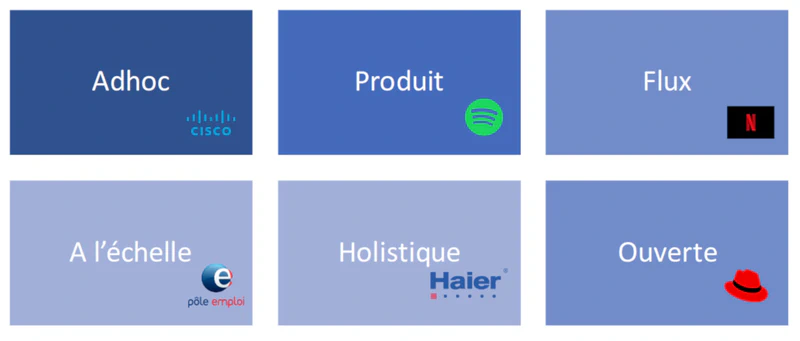
Structure of archetypes and their characteristics
Each archetype proposes its managerial structure and characteristics. We give two in focus during the meetup: product archetype and adhoc archetype. The focus is on three levels: strategy, tactics, and operations.
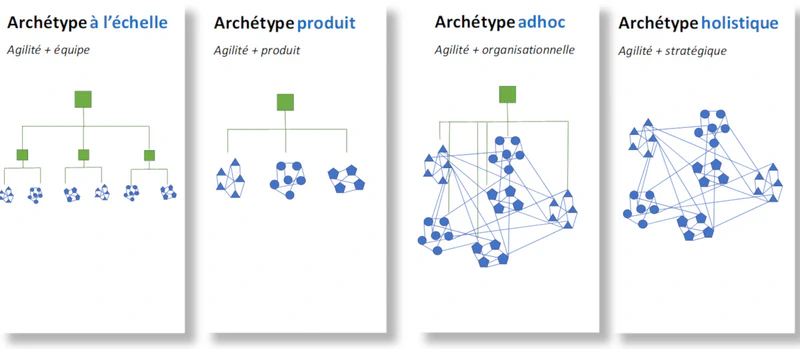
All this information proposes a model. We know things. It’s about having elements for a genuine conversation. We needed elements of the agile enterprise. Where do you stand? In which archetype do you project your company, or this department? Then be attentive to what we know about these archetypes. Does it really correspond to what you want to be? Is its implementation coherent? As always it’s a model, it’s wrong, but it allows for a constructive conversation.
All this provides a discussion framework that may allow you to talk, for example, about tools (on one side) or meaning (on the other), by reducing the field of possibilities, by articulating on more concrete things.
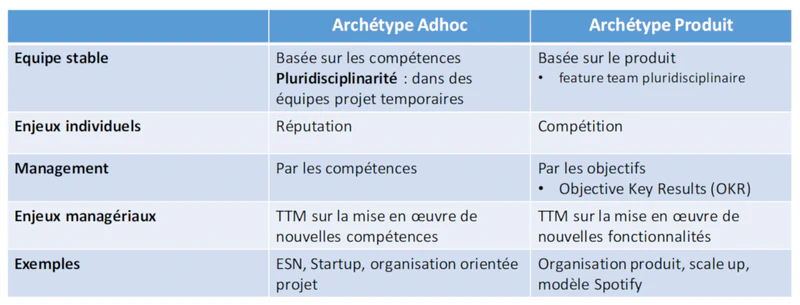
Life cycle, attraction, external forces
Key point, these archetypes have a life cycle. An attraction pushes them to the right, this can push them to die or to reform. There is also a logical sequence that can be challenged by an external force, not only internally. An external force? An economic crisis, a change of direction, a buyout, a market shift, etc.
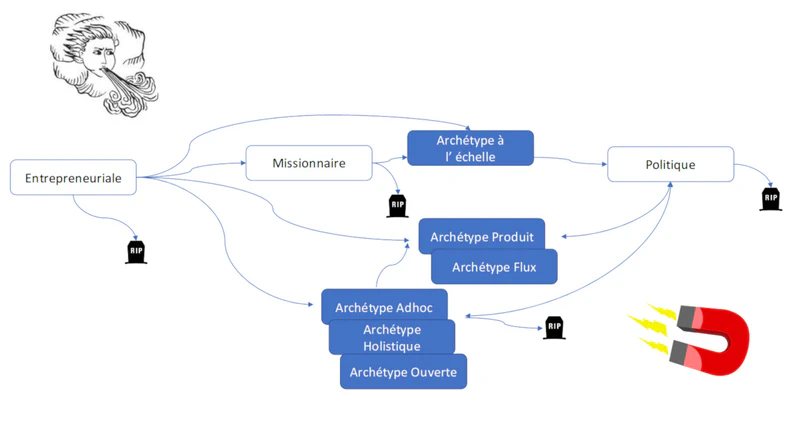
What observations for (agile) transformations?
We call revitalization a company that reappropriates a good way of functioning, from dysfunctional to functional, without changing archetype. We call reform a company that changes archetype, because its nature has changed, or must change.
- Organizations naturally change archetypes.
- You cannot go from any archetype to any archetype
- This is rare and happens when the organization is no longer in phase with its external environment and revitalization is no longer sufficient
- This questions our intention regarding organizational transformations (agile or not): is it linked to these changes or unrelated? Should we put the system in crisis?
Part 2
In the second part of the meetup (coming soon here), we will question ourselves with this instrument of archetypes on how to read and how to respond to the revitalization or reform of companies with examples.
Slides, the slide deck
More slides, but less explanation below. If this makes sense to you and to us, don’t hesitate to contact us to hold this meetup again.
[
Thank you
A big thank you to CFM for their welcome, their buffet, their terrace, their beers. Thanks to all those present, for the smiles and conversations.
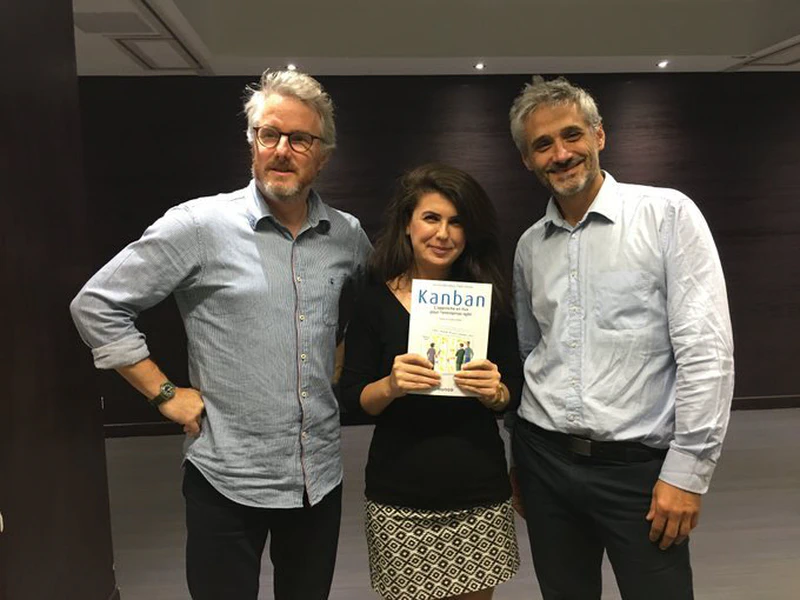
Sources
- The first part on complex companies
- The second part on complex companies
- Wikiversity on Mintzberg
- HRMag on Mintzberg, 2019
- Organizational forms according to Henry Mintzberg, Alain Dupuis, Richard Déry
- A model for agile enterprise, by Laurent Morisseau
- Complex companies, part 1
- Complex companies, part 2
- Dilts pyramid and organizational harmonization
- Meetup slides 2019
- PDF file: Any resemblance… on the Dilts pyramid at BENEXT in 2019